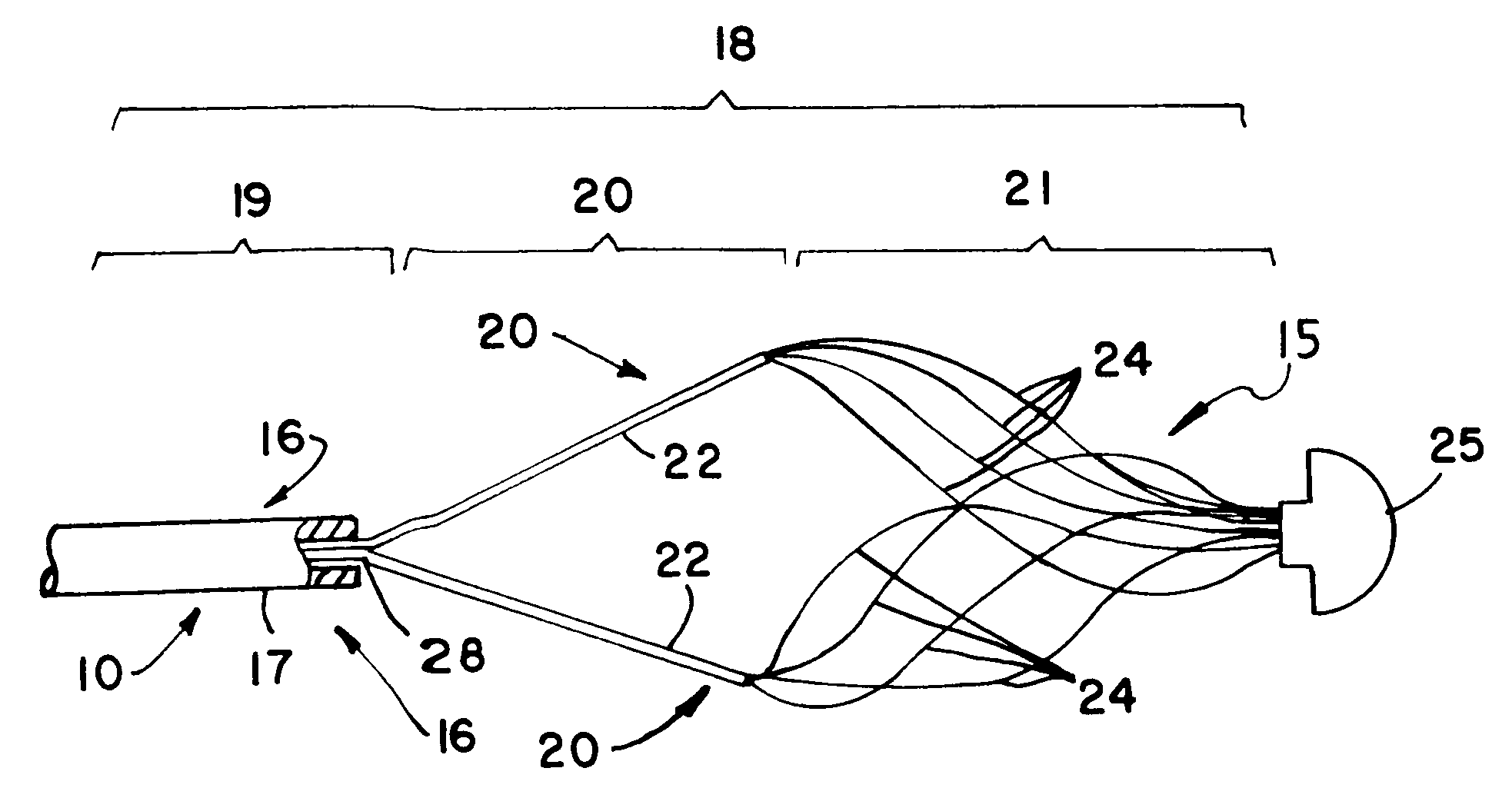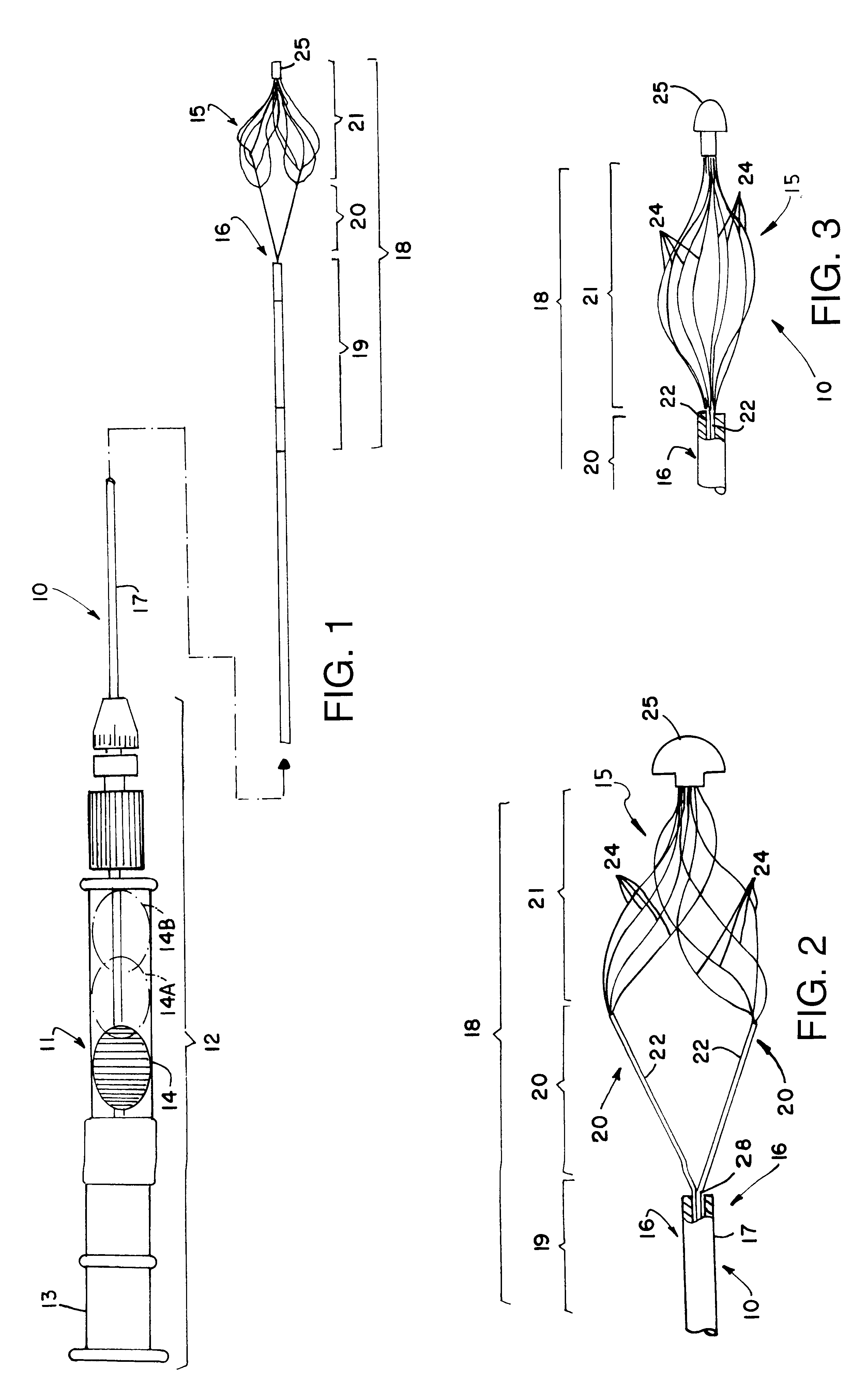Surgical extractor
a surgical and extractor technology, applied in the field of surgical extractors, can solve the problems of limiting the diameter of the wire, imposing upper limits on the number of wires and the size of individual wires, and being more difficult to manufactur
- Summary
- Abstract
- Description
- Claims
- Application Information
AI Technical Summary
Benefits of technology
Problems solved by technology
Method used
Image
Examples
Embodiment Construction
FIG. 1 depicts one embodiment of a surgical extractor 10 constructed in accordance with this invention. The surgical extractor 10 includes a handle 11 at a proximal end 12 having a base 13 and a slider 14. A physician can grasp the base 13 in the palm in his or her hand and manipulate the slider 14 with his or her thumb. A retrieval basket 15 formed in accordance with this invention is located at the distal end 16 of the extractor 10. A sheath 17 overlies an intermediate supporting structure between the handle 1 and the retrieval basket 15.
As shown in FIG. 1 the slider 14 is located at a proximal position 14. As the slider 14 advances to a distal position 14B as depicted in phantom, the sheath 17 advances from the position depicted in FIG. 2 through the position shown in FIG. 3 to the position illustrated in FIG. 4. In FIG. 4 the sheath 17 compacts and covers the retrieval basket 15 within a central aperture of the sheath. The sheath 17 typically comprises a polyimide tube or a tube...
PUM
 Login to View More
Login to View More Abstract
Description
Claims
Application Information
 Login to View More
Login to View More - R&D
- Intellectual Property
- Life Sciences
- Materials
- Tech Scout
- Unparalleled Data Quality
- Higher Quality Content
- 60% Fewer Hallucinations
Browse by: Latest US Patents, China's latest patents, Technical Efficacy Thesaurus, Application Domain, Technology Topic, Popular Technical Reports.
© 2025 PatSnap. All rights reserved.Legal|Privacy policy|Modern Slavery Act Transparency Statement|Sitemap|About US| Contact US: help@patsnap.com



